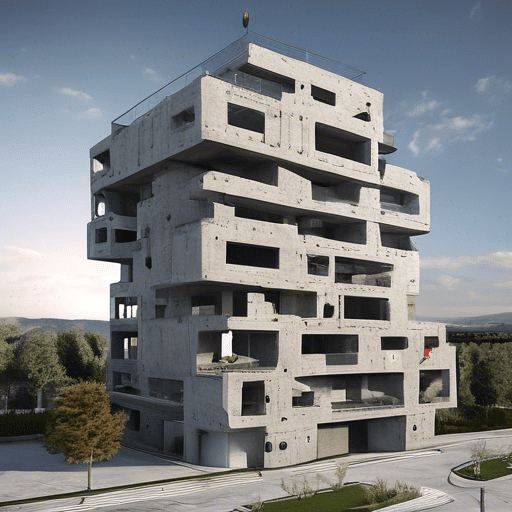To meet building codes, fire sprinklers are a necessary part of construction projects in many states. Utilizing an automatic fire

The reinforced concrete building design is usually used for construction purposes on a large scale, for instance, high-rise buildings or skyscrapers. The compact and tensile strength of reinforced concrete means it can hold out the weight of a house being constructed upon it, and the pressure exerted by the weight of the house. Reinforced Concrete is one of the most extensively used materials in the construction of modern buildings or lofty structures. This technique is suitable for building designs because it can withstand pressures or stresses made by vibrations, oscillations, wind loading, and many more. In this article, we will discuss reinforced concrete building designs, the reasons to use reinforced concrete material for building designs, and its building code requirements in Seismic California, USA.
Introduction
The reinforcement, which is often referred to as “Rebar”, is usually used in the construction of building structures as they are capable of resisting tensile forces. Reinforcement concrete is the mixture of concrete and reinforcement that is used for building design and construction. It is provided by inserting welded wire material or deformed steel bars within newly made concrete at the hour of casting. The chief objective of using reinforced concrete in building design is to provide extra strength for concrete where it is required. The reinforced concrete building design is one of the most modern and effective methods of construction because the reinforced concrete material is extremely durable, strong, and requires less maintenance. It has excellent thermal mass and is intrinsically fire-retardant.
Reinforced Concrete Building Design Components
Reinforced Concrete Building Designs
Reinforced Concrete material is suitable for building designs because it has robustness, sturdiness, and, extraordinary compressive strength, implying that significantly heavy loads or weights can be put upon it without it breaking or giving any indication of fatigue. Embed steel bars that have high tensile strength into concrete give you a reinforced concrete, an extremely reliable construction material that integrates the best components of both materials.
Detailing of Concrete Reinforcement
Reasons to use Reinforced Concrete in Building Designs
Reinforced concrete building designs are one of the broadly used construction methods in California, USA. Following are the reasons to use reinforced concrete in the construction of buildings:
1. Reinforced concrete material is highly fire-retardant and wind load resistant.
2. Reinforced concrete is flexible and versatile. It can be molded into nearly any shape necessary for building construction.
3. Reinforced concrete requires little maintenance. Thus, it has an extremely low maintenance budget.
4. Reinforced concrete is capable to withstand weather conditions and resistant to humid conditions. That’s why it is suitable for dams, docks, and footings.
5. Reinforced concrete material is comparatively less costly than corresponding steel structures.
6. Reinforced concrete needs less expert labor when building a large building or structure.
Building Code Requirements for Reinforced Concrete Building Designs
In the United States, reinforced concrete building designs are directed by the American Concrete Institute (ACI) 318 “Building Code Requirements for Structural Concrete” that incorporates the requirements for design and development of reinforced concrete building structures that guarantee the safety and protection of the residents. It is obligatory that the building structures must be designed or constructed as per the requirements of a building code, which is a complete legitimate document holding provisions related to structural safety, ventilation, fire safety, mechanical and plumbing, heating and cooling, and convenience to the physically disabled person.
Provisions set By ACI 318-08 and ACI 318-11 Building Code
The American Concrete Institute (ACI) Building Code Requirements for Structural Concrete (ACI 318-08) and ACI 318-11 Building Code (PCA Notes) put forward provisions for structural reliability reinforcement deliberated to enhance steadiness, stability, improve the pliability and redundancy of designs. This is accomplished by providing some stability reinforcement. The building code delivers provisions for reinforcement specifying to avoid extreme crack width under various service conditions.
Reinforcement concrete building designs are mainly load-bearing and tensile forces resistant. Moreover, reinforcement is delivered in compression areas to escalate the compression capability, improve pliability and adaptability, minimize long-term rebounds or expand the flexural strength for a beam.
Additionally, reinforcement concrete in building designs is essential to avoid excessive cracking resulting from temperature variations or shrinkage in limited structural components. It is significant to provide the sufficient space of reinforcement necessary to resist compression or internal tensile forces required to accomplish the design strength. The necessary condition for the development of supporting or reinforcing bars is that they must be surrounded by concrete. Besides giving adequate zones of reinforcement and the necessary development lengths, it is also mandatory to provide good detailing by considering the entire structural integrity.
Flexural Design of Reinforced Concrete Beam
Conclusion
By concluding this article, it is cleared that Reinforced concrete building designs are one of the extensively used and highly appreciated methods for constructing high-rise building structures. Reinforced concrete building designs are capable to cope with heavy loads and internal tensile forces results in the prevention of excessive cracking and damages. The entire capability of a reinforced concrete building design to cope with the abnormal weights resulting from unpredicted occasions, which cannot be contemplated in design, can be increased greatly by providing comparatively minor modifications in the reinforcement detailing.
About Author
InnoDez